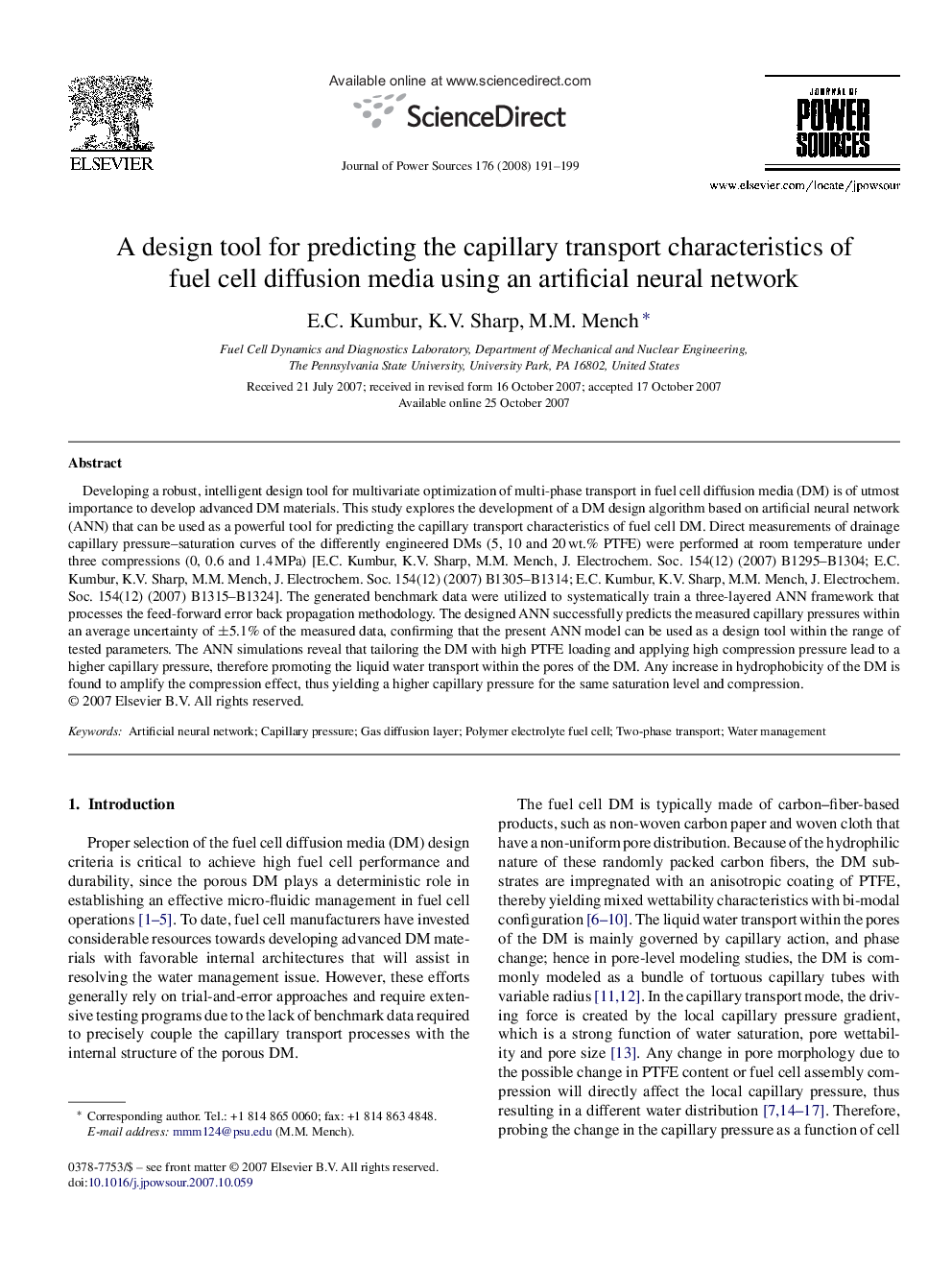| کد مقاله | کد نشریه | سال انتشار | مقاله انگلیسی | نسخه تمام متن |
|---|---|---|---|---|
| 1285884 | 973164 | 2008 | 9 صفحه PDF | دانلود رایگان |

Developing a robust, intelligent design tool for multivariate optimization of multi-phase transport in fuel cell diffusion media (DM) is of utmost importance to develop advanced DM materials. This study explores the development of a DM design algorithm based on artificial neural network (ANN) that can be used as a powerful tool for predicting the capillary transport characteristics of fuel cell DM. Direct measurements of drainage capillary pressure–saturation curves of the differently engineered DMs (5, 10 and 20 wt.% PTFE) were performed at room temperature under three compressions (0, 0.6 and 1.4 MPa) [E.C. Kumbur, K.V. Sharp, M.M. Mench, J. Electrochem. Soc. 154(12) (2007) B1295–B1304; E.C. Kumbur, K.V. Sharp, M.M. Mench, J. Electrochem. Soc. 154(12) (2007) B1305–B1314; E.C. Kumbur, K.V. Sharp, M.M. Mench, J. Electrochem. Soc. 154(12) (2007) B1315–B1324]. The generated benchmark data were utilized to systematically train a three-layered ANN framework that processes the feed-forward error back propagation methodology. The designed ANN successfully predicts the measured capillary pressures within an average uncertainty of ±5.1% of the measured data, confirming that the present ANN model can be used as a design tool within the range of tested parameters. The ANN simulations reveal that tailoring the DM with high PTFE loading and applying high compression pressure lead to a higher capillary pressure, therefore promoting the liquid water transport within the pores of the DM. Any increase in hydrophobicity of the DM is found to amplify the compression effect, thus yielding a higher capillary pressure for the same saturation level and compression.
Journal: Journal of Power Sources - Volume 176, Issue 1, 21 January 2008, Pages 191–199